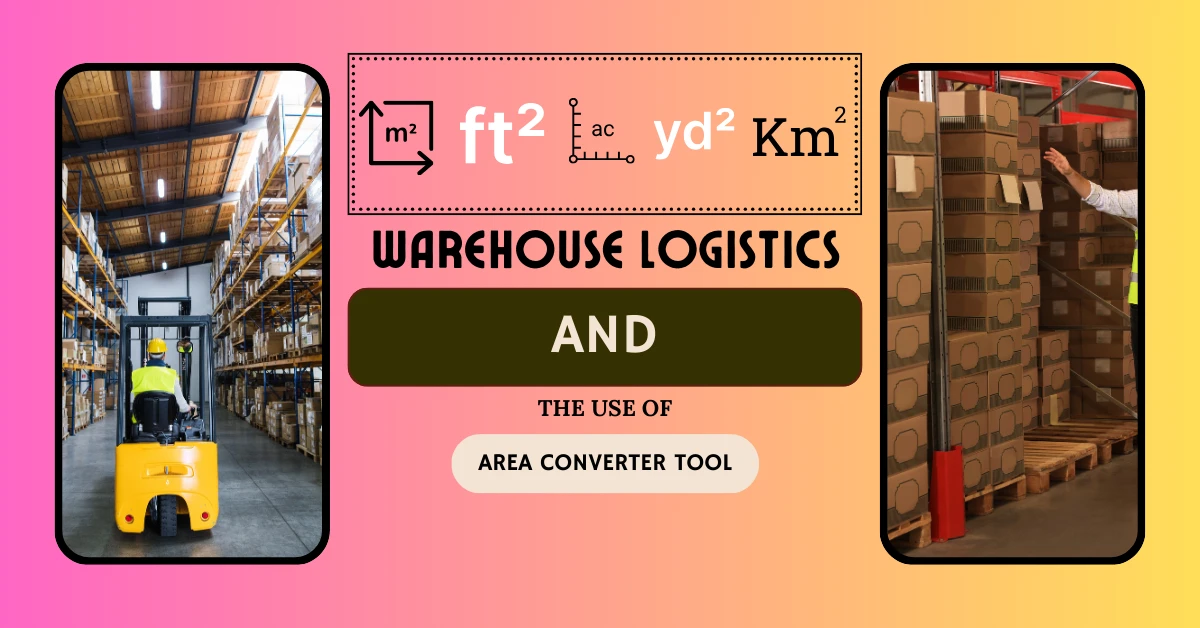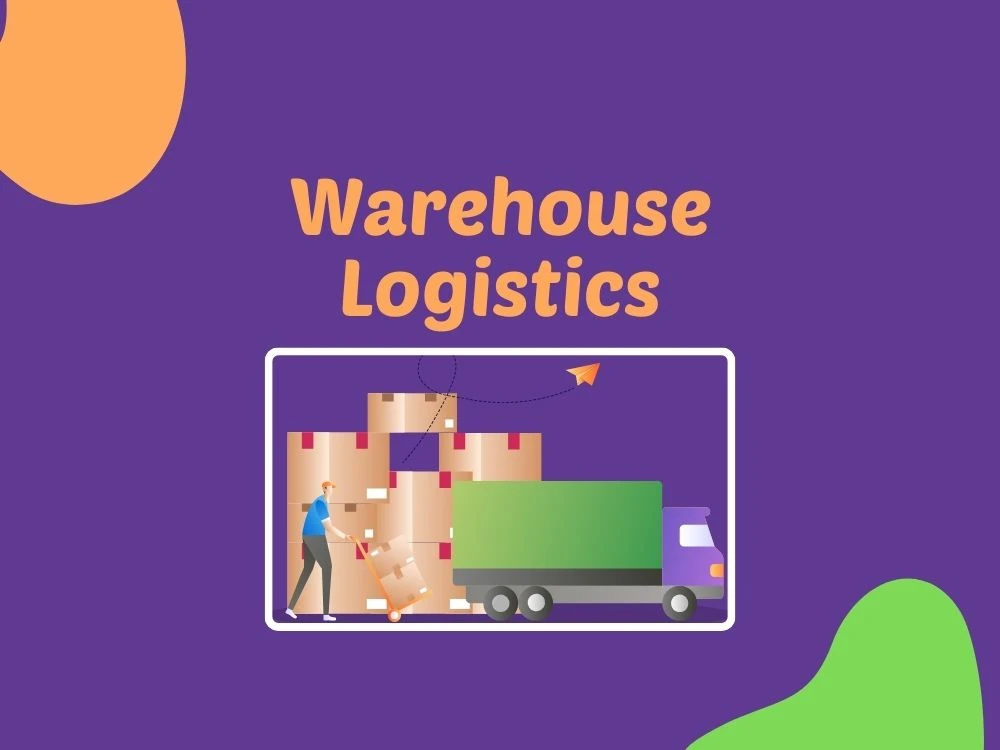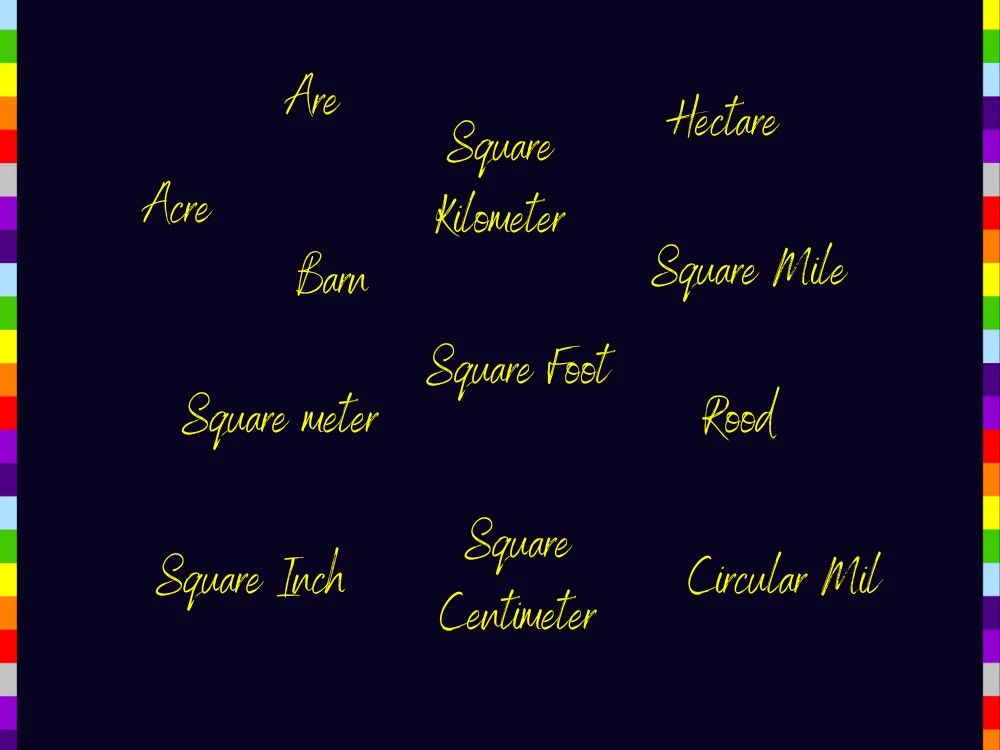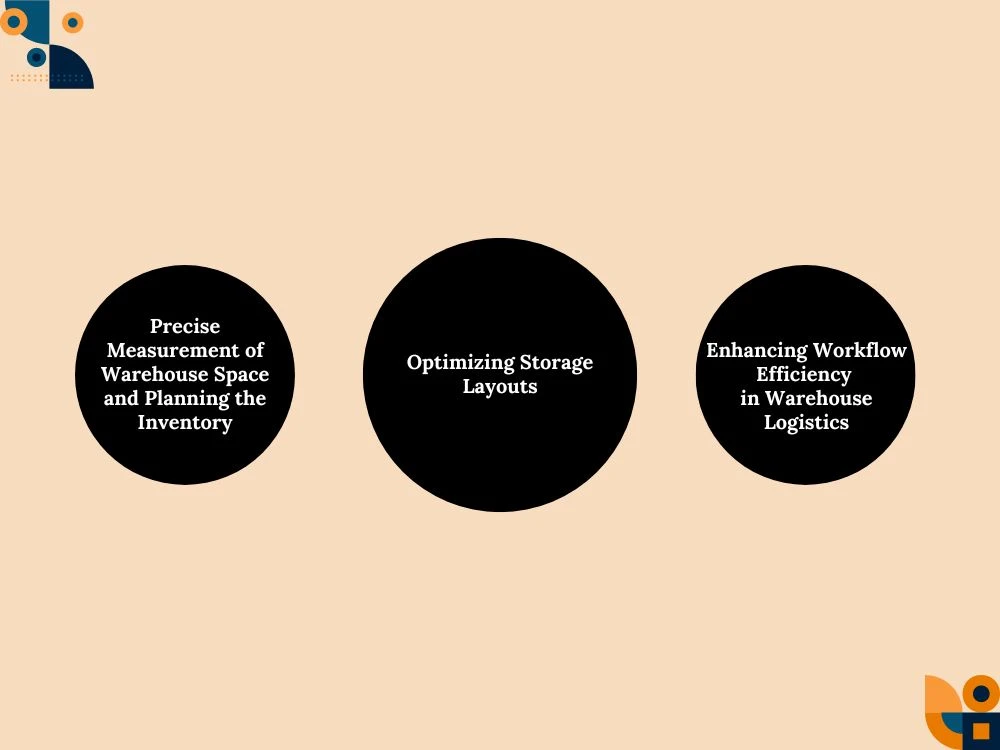
What is Warehouse Logistics: Managing Warehouse Space with an Area Converter Tool
Warehouse logistics is a process that involves certain functions like managing inventory storage, moving stuff, and distributing goods within the warehouse facility. It includes necessary tasks like inventory management, fulfilling orders, and optimizing the warehouse layout to maximize space utilization.
Managing space is one of the crucial functions of warehouse logistics. It helps improve space utilization and efficiency which contribute to operational efficiency. An area converter is a tool that assists in efficiently converting various area units like acres, barns, square feet, square meters, square yards, Roods, and many more.
Utilizing the online area converter tool is helpful to manage the warehouse space efficiently. This is significant to perform warehouse logistics operations perfectly. By ensuring this, organizations can make sure that their products are stored, retrieved, and delivered on time to meet customer demands.
Key Takeaways
- Understand the Key Components of Warehouse logistics and Challenges in Space management.
- Identify What is an Area Converter Tool and How It Helps in Warehouse Space Management.
- Learn the Key Applications of an Area Converter Tool in Warehouse Logistics.
Overview of Warehouse Logistics

A) Key Components of Warehouse Logistics
Warehouse logistics include certain things like managing inventories, optimizing storage, processing orders, and proper distribution. Let’s see one by one:
- Inventory management: This is an important component in warehouse logistics which tracks inventory stock levels, replenishes the goods on time, and properly organizes the items for quick retrieval.
- Storage optimization: This particular feature focuses on improving the storage space area through an effective layout plan and design. By maximizing storage space utilization, organizations can able to enhance their space efficiency.
- Order processing: It involves many aspects related to orders such as receiving orders, packaging, shipping products, and other related duties.
- Distribution: This function is responsible for transferring the goods from the warehouse facility to the relevant parties. It involves transporting products directly to the end users (customers) or retail stores.
B) Challenges in Space Management
There are certain challenges faced by organizations within the warehouse area in managing the space. Every business is required to maximize the utilization of its available space to enhance the workflow. But unfortunately, they have to face these common challenges known as:
- Varying Products Sizes: The product sizes are different and firms have to deal with managing the space for various products in different sizes.
- Fluctuations in Inventory Levels: Inventory levels fluctuate according to seasonal changes. When there are more demands, more products are required to be stored for quick retrieval and delivery. At the time of peak demand, optimizing warehouse storage can be a greater challenge.
- Minimizing Waste: Some warehouse areas are cluttered with waste materials and unwanted stuff. It is essential to properly declutter these waste materials to maximize the storage area and efficient utilization of available space.
In addition to these challenges, warehouse managers and staff are responsible for addressing important safety regulations, maintaining accessibility to prevent obstructions and accidents, and meeting other essential business needs.
Introduction to an Area Converter Tool

A) What is an Area Converter Tool?
An area converter is an online tool that helps convert different area units accurately. Smart Tools AI’s area converter is efficient in converting the following area units which help you optimize your warehouse logistics operation.
- Acre (acre): This is a commonly used area unit in real estate and land measurement. One acre is equivalent to 43,560 square feet.
- Are: This is known as an area unit that equals 100 square meters. This unit is commonly used in land measurement which you can utilize for warehouse land optimization.
- Barn (barn): This is a small area unit that is used in nuclear physics. One square foot equals 9.290304e+26 B.
- Circular mil: This can be identified as a particular area unit that is used to measure the cross-sectional area of wires. This unit is equal to the area of a circle with a diameter of one mil (1/1000 inch). One square centimeter equals 197352.516 Circular mil.
- Hectare: This is a common metric unit of area equals 10,000 square meters or 2.47 acres. This unit is most commonly used in agriculture and land measurement.
- Rood: This area unit is identified as an old English unit that is equal to one-fourth of an acre (0.25 acre). Mostly this unit is used in historical contexts.
- Square centimeter: An area unit that equals the area of a square. It is calculated by multiplying the length and width of an area by centimeters. 929 square centimeters equals one square foot.
- Square foot (ft^2): This unit is equivalent to the area of a square with sides (width and length) multiplied in foot units. It is commonly used in real estate and construction. Also, useful to optimize the warehouse layout and storage. One square foot equals 144 square inches.
- Square inch (in^2): An area unit that is equal to the area of a square where the length and width of the area are multiplied by the inch. Mostly this unit is used in engineering and manufacturing. One square inch equals 6.45 square centimeters.
- Square kilometer: This is an area unit that equals 1,000,000 square meters. This particular unit is mostly used in geographical and urban planning contexts.
- Square meter (m^2): One of the International systems of units (SI units) of area that is equal to the area of a square where length and width are multiplied by meters. This unit is widely used in scientific and everyday applications. One square meter equals 10.76 square feet.
- Square mile (mi^2): This area unit is equivalent to the area of a square where length and width are multiplied by miles. Most frequently used in geographical and land measurement contexts. One square mile equals 2.59 square kilometers.
- Square yard (yd^2): An area unit that is equal to the area of a square where length and width are multiplied by yards. This unit is commonly used in real estate and landscaping. One square yard equals 09 square feet.
B) How Area Converter Tools Aid in Warehouse Space Management
When it comes to warehouse space management, the area converter tool plays a significant role. It helps warehouse managers plan the layout of the warehouse space and efficiently set up the storage for inventories.
The tool is always available online and provides precise conversion measurements between different area units. Whether the managers need to find out square meters, square feet, square inches, or any other area units, this tool quickly provides accurate results. This is important to plan and optimize the warehouse area.
Moreover, by understanding the warehouse storage facilities dimensions in various area units, managers can easily allocate resources and maximize their storage capacity. This will help achieve more productivity from the available space.
Application of an Area Converter Tool in Warehouse Logistics

A) Precise Measurement of Warehouse Space and Planning of the Inventory
The area converter tool is helpful to precisely measure the warehouse space and its capacity. This helps identify and plan the inventory storage. For example, a cement manufacturing facility produces cement packets that are 2 feet long and 1,2 feet wide. Their warehouse area is 100 meters long and 40 meters wide. To calculate how many cement packets they can store efficiently, they utilize the area converter to do the math.
- Area of one cement packet = 2 feet * 1.2 feet
= 2.4 square feet
- Area of the warehouse space = 100 meters * 40 meters
= 4000 square meters
- Here the area converter is used to measure the size of warehouse space in square feet:
4000 square meters equals 43055.64 square feet
- The number of cement packets that can fit in the warehouse = 43055.64 ft^2 / 2.4 ft^2
= 17940 packets.
It is easy to calculate the warehouse space to properly determine the number of products that can fit the area by using an area converter tool. Moreover, it reduces confusion and inefficiency in warehouse logistics operations.
B) Optimizing Storage Layouts
The tool helps optimize the storage layouts by offering accurate conversions between different area units. Warehouse managers can utilize these precise measurements to strategically arrange shelves, racks, and other storage areas to maximize the capacity of the storage. It also ensures the efficiency of inventory accessibility.
By accurately converting area measurements into preferred units like square meters (m^2), square feet (ft^2), or any other units, managers get the visualization to plan storage layouts effectively. This will help minimize unutilized wasted space and improve overall warehouse efficiency.
Moreover, the area converter tool enables managers to swiftly adapt layouts to accommodate necessary changes in inventory volume or product dimensions. This ensures optimal utilization of available space at all times.
C) Enhancing Workflow Efficiency in Warehouse Logistics
Organizations can enhance workflow efficiency in warehouse logistics by utilizing the area converter tool for storage layout plans, inventory management, and efficient space allocation within the warehouse area.
The tool helps identify accurate measurements which is important to perform all warehouse logistics tasks. It minimizes unnecessary movements, reduces clutters, optimizes workflow pathways, ensures safety, reduces accidents and assists in a continuous improvement in workflow efficiency.
This way the company can achieve workflow efficiency in warehouse logistics that is directly proportionate to productivity enhancement.
Wrapping Up
Warehouse logistics involves all necessary tasks within the warehouse area such as inventory management, movement of goods, storage space optimization, order processing, and product distribution.
While conducting warehouse logistics operations in an organization, the area converter tool helps perform these tasks efficiently. There are certain challenges faced by organizations in warehouse space management such as varying product sizes, inventory level fluctuations, and waste minimization challenges.
Utilizing an area converter is useful to convert different area units like square meters, square kilometers, square feet, Rood, or any other units. This conversion helps in optimizing storage layouts, measuring the warehouse space accurately, and enhancing workflow efficiency in warehouse logistics.
FAQ
Q1: What is warehouse logistics?
A process that involves all logistics-related tasks within a warehouse facility such as inventory management, storage optimization, and movement and distribution of stuff.
Q2: Why warehouse storage space optimization is important?
It is important to ensure a smooth transition of goods, establish unobstructed pathways, and for efficient utilization of available space. If companies fail to optimize their storage space, they can’t efficiently handle their inventory storage. This may lead to more waste, losses, damages, obstructions, and in the worst cases, fatal accidents.
Q3: Can you please give me a simple example of utilizing an area converter for warehouse space optimization?
A medium size warehouse space of a furniture manufacturing company is 3200 square feet (80 feet in length and 40 feet in width). The company uses 75% of the warehouse area for storage and 25% of the area for other operational duties. To precisely calculate the warehouse storage capacity for furniture products, the area converter is used. The average area of a furniture product equals 1.5 meters square (16.146 ft^2) and the storage is capable of storing 3200 square feet * 75 % = 2400 square feet of storage area / 16.146 square feet = 148.6 or 148 furniture products.
Explore Related Posts
https://smarttoolsai.com/post/length-converter-in-apparel-construction-and-other-key-industries
https://smarttoolsai.com/post/food-and-beverage-industry-and-electric-unit-converters
.webp)